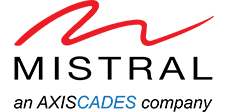The global recession of the past two years has hit the video surveillance industry especially hard, with few businesses willing to invest in new systems and even fewer wanting to upgrade existing systems. The high-tech fields related to IP video surveillance, which tend to provide more complex services than traditional use of CCTV cameras, have been affected more severely by the downturn. However, at the same time there have been significant advances in business models and standards related to IP surveillance. 2011 will be the year both that the industry leaves its recession as well as takes significant advantage of all the technological changes developed during 2009 and 2010.
Forecasts for 2008 prior to the recession saw intelligent, computerized video surveillance becoming more prevalent, and analysts are predicting a similar emphasis on digital, online and other forms of computerized video surveillance in 2011. However, this year the focus will be more on the business side of video surveillance than on the technological side, which should be excellent news to businesses worldwide.
Changing business models
- VSaaS — Video Surveillance as a Service, or VSaaS, was among the hottest technologies to sweep the IT world in 2010. For a low monthly fee, users can install video surveillance and let a separate business take care of storage, video analytics software, hardware maintenance and other systemic elements. Like many “software as a service” businesses, we predict the VSaaS industry will experience a number of growing pains due to poor bandwidth when connecting to videos and high monthly fees providing low ROI for users compared to standard CCTV implementation. VSaaS may have to undergo some significant changes to their current business models if they want to stay relevant throughout 2011.
- VMS — The Video Management Software industry saw some explosive changes throughout 2010, particularly with Milestone’s free release of XProtect Go, an easy-to-use budget video program, in August 2010. Milestone, one of the leading global VMS providers, succeeded in changing the game for an entire industry long dominated by arcane user interfaces and expensive price tags.
- Expect to see a continued shakeup throughout 2011, as businesses like ONSSI seek to compete by providing more features and better technology at reduced prices. Whereas VSaaS may not provide as much ROI for businesses as the hype surrounding the technology might suggest, the competition among managed/hosted VMS companies may provide a better solution this year.
- Video Analytics – Perhaps the most over-hyped technology of several years ago, the potential of video analytics businesses and programs has faltered over the past few years. This industry was still in its infancy in 2008, with a whole lot of promise, but few tangible results. With the recession, money that might have been spent on improving analytics technology simply wasn’t there. However, new companies such as Vitamin D have caused a splash by making video analytics software affordable and easy for consumers to install and use. 2011 will likely see some gains in the analytics market, though only time will tell whether a) investors provide money for technological improvements and b) old businesses will be able to bring the technology into the coming decade, or whether c) new businesses will need to arise to fill the void.
Improved IP video surveillance standards
Standards are vital to the growth of any industry, as they effectively give manufacturers a template for production, reducing costs and improving user experience. 2010 saw the widespread adoption of ONVIF standards and 2011 is likely to see the widespread implementation of those standards throughout all the video surveillance industries. This will allow companies to arise which blend different manufacturers’ IP video surveillance systems to produce new and more powerful technologies.
The continued rise of all-inclusive video surveillance management businesses will dominate the news of 2011. These businesses will provide whole security systems complete with analytics, management and even VSaaS, as well as other types of software. All three of the business models discussed above are likely to see gains this year due to the ONVIF standards implemented across the board, making it easier to connect with customers.
ONVIF stands for Open Network Video Interface Forum, and it has proven itself as the world leader in video surveillance standards. Its major goals are to foster interoperability and flexibility between IP video surveillance providers, manufacturers and software developers, in order to improve the speed at which the industry evolves. These standards will, when it all comes down to it, provide the most significant boost of 2011. While not all news stories will show their involvement, the businesses that make the news will have been able to do so because they took advantage of improved standards.
Conclusion
Overall, 2011 will be a very strong year for the growth of IP cameras and their associated industries. The technological potential of analog cameras hit a plateau a long time ago, and while they’re cheaper and get the basic job done, as businesses start to get back on their feet and bring in greater profits, they will look to more interesting features for their video surveillance systems.
The past two years have seen a number of technological improvements in the world of IP video, from the growth of VSaaS to the development of standards such as ONVIF. These improvements have so far been too expensive for a recessed economy, but as the economy leaves the recession, the video surveillance industry will see improved profits, more businesses, and better implementation of existing technology. This will be achieved primarily through the development of new business models to meet greater demand. We have seen the rise of some of these models such as Milestone’s free VMS software, but we expect to see more surprises in store for the video surveillance industry, especially in the IP world, throughout the coming year.



